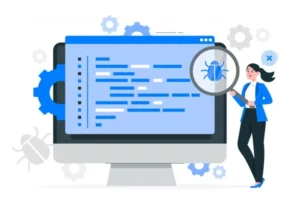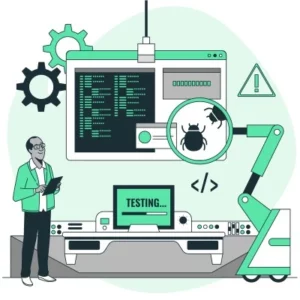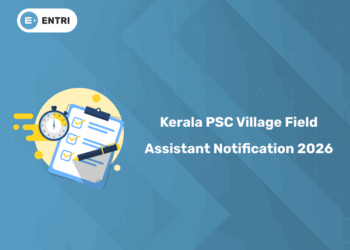Table of Contents
Key Takeaways:
- Manual testing career paths are accessible without coding skills.
- Performance testing requires light scripting; automation needs robust programming expertise.
- Soft skills and testing knowledge are crucial for tester success.
- Automation tools vary in coding requirements; some support non-coders well.
- Learning to code gradually expands career opportunities and earning potential.
Introduction
Building a career in software testing without coding skills is not only possible but increasingly common. If you are detail-oriented and passionate about software quality, you can become a successful software tester, especially focusing on manual testing roles that don’t require programming. Many professionals have established fulfilling careers by mastering testing fundamentals, using test management tools, and focusing on user experience rather than writing code.
While coding boosts opportunities in areas like automation testing, it’s not mandatory to start or grow in software testing. This blog dives into how you can launch and develop your software testing career without coding, the differences among manual, performance, and automated testing in terms of coding requirements, and why learning programming later is still valuable.
Can You Build a Career in Software Testing Without Coding?
1: What is software testing?
Yes, you absolutely can. The vast majority of manual testing does not require coding skills. Manual testers execute test plans, identify bugs, and report issues using testing tools, all without programming. Performance testing introduces light scripting for load simulations, while automation testing is programming-intensive, involving writing test scripts in languages like Java or Python.
Manual Testing Explained
Manual testing is the process of manually executing test cases without automation tools. It focuses on testing software features from an end-user perspective to ensure the product works as intended. Manual testers rely on their analytical skills and testing knowledge to uncover bugs related to functionality, usability, and user experience.
Manual testing places emphasis on logic and human judgment rather than technical coding knowledge. Tools commonly used in manual testing manage test cases and bug reports, such as JIRA for issue tracking or TestRail for test case management.
Master Testing Skills with Industry Experts
Become a Test Engineer: Learn Core Skills from Industry-Leading Mentors and Land High-Paying Testing Jobs!
Explore ProgramCoding Requirements in Performance and Automation Testing
Performance testing tools sometimes require scripting, for example, in JMeter or LoadRunner, to simulate multiple users and evaluate application speed and stability. This involves some knowledge of programming or scripting languages.
Automation testing, on the other hand, requires significant programming skills. Test automation engineers create scripts that automatically test software features using frameworks like Selenium, Appium, Playwright, or Cypress. This role demands expertise in languages such as Java, Python, or JavaScript.
How to Start a Career in Manual Software Testing Without Coding
- Learn the basics of software testing concepts and methodologies, including SDLC and STLC.
- Gain proficiency in manual testing techniques like test case design, execution, defect reporting, and exploratory testing.
- Get familiar with popular manual testing tools and bug tracking systems such as JIRA, TestRail, and Postman for API testing.
- Obtain certifications such as ISTQB Foundation Level to validate your understanding and increase employability.
- Build practical experience through internships or freelancing on platforms like uTest or by contributing to open-source projects.
- Develop critical soft skills like attention to detail, communication, and analytical thinking, which are essential for effective testing and collaboration.
Essential Tools Used in Manual Testing
Manual testing involves a structured approach to validation without heavy reliance on programming skills. However, testers utilize various specialized tools to manage workflows, track bugs, and maintain test cases efficiently. Here are some of the most popular and effective manual testing tools used in 2025 that help testers execute their responsibilities smoothly:
Jira
Jira is one of the most widely adopted issue and project management tools. While it doesn’t automate tests, it is essential for logging, tracking, and managing bugs and issues discovered during manual testing. Its integration capabilities with other software make it a hub for collaboration between testers, developers, and managers. Jira supports workflows, notifications, and reporting features, enabling testers to maintain transparency and progress visibility.
TestRail
TestRail is a dedicated test case management tool tailored for manual testing teams. It allows testers to design and organize test cases, create test plans, track execution progress, and generate comprehensive reports. TestRail simplifies the process of linking test results to requirements and defects, providing a holistic view of quality assurance efforts. It’s widely praised for its intuitive web-based interface and seamless integration with Jira, making it easier for manual testers to focus on test coverage and documentation.
MantisBT
Mantis Bug Tracker (MantisBT) is an open-source bug tracking tool favorable for smaller teams or simpler projects. It offers straightforward issue logging, status tracking, and prioritization features without complexity. Mantis supports role-based access control and email notifications to keep teams aligned on bug status and fixes, making it a practical choice for manual testers seeking lightweight, cost-effective solutions.
TestLink
TestLink is another open-source test management system designed to help manual testers plan, execute, and monitor testing activities. It supports test case creation, test execution recording, requirement traceability, and defect tracking. Its integration with tools like Jira and Bugzilla enhances its capabilities while providing manual testers with a centralized platform for managing test life cycles effectively.
Postman (for API testing)
Although Postman is commonly recognized as an API testing tool, it is highly valuable in manual testing contexts for validating API responses and workflows without needing to write code. Its user-friendly interface enables testers to build and run API requests, inspect responses, and create automated test collections with minimal scripting, facilitating manual API validation and exploratory testing.
SpiraTest
SpiraTest is a comprehensive test management and defect tracking tool helpful for manual testing teams aiming to centralize test cases, requirements, and defects. It offers robust reporting, customizable workflows, and integration with popular issue tracking tools. Its capability to track manual test progress and link test cases to requirements makes it a versatile choice for structured manual testing environments.
BrowserStack Live
BrowserStack Live facilitates manual testing across a wide range of real browsers and devices via cloud-based infrastructure. Testers can perform cross-browser compatibility testing without needing local setups or complex configurations. With instant access to numerous environments, manual testers can validate UI and functionality on diverse platforms efficiently.
These manual testing tools are designed to supplement the tester’s analytical expertise and communication skills, enabling organized and thorough quality verification without the requirement to write code. They streamline test management, defect tracking, and collaboration, forming the backbone of effective manual testing workflows.
Master Testing Skills with Industry Experts
Become a Test Engineer: Learn Core Skills from Industry-Leading Mentors and Land High-Paying Testing Jobs!
Explore ProgramSkills That Matter Most in Non-Coding Testing Roles
- Strong analytical thinking and problem-solving abilities to understand software behavior.
- Attention to detail in executing test cases and identifying edge cases.
- Communication skills for effective bug reporting and coordination with developers and stakeholders.
- Knowledge of software development cycles and quality assurance processes.
- Optional familiarity with databases and SQL queries can support backend testing without heavy coding.
Career Growth Without Coding: What’s Possible?
Manual testing roles can lead to advanced positions such as senior tester, test lead, QA analyst, or business analyst. You can also specialize in areas like user acceptance testing (UAT) or usability testing. Leadership and strategy roles often focus more on process and planning than coding.
While automation roles require programming, many testers start manually and transition over time as they learn to code or use low-code/no-code automation tools.
Why Learning Programming is a Worthwhile Investment
Programming skills empower you to automate repetitive tests, reduce manual work, and increase testing efficiency. They also open doors to higher-paying roles in automation testing, performance engineering, and DevOps.
Starting manually and gradually learning coding is a practical approach. Many testers learn just enough scripting to automate small tasks and later move into full automation roles as desired.
Challenges Without Coding
- Limited access to automation and performance testing jobs.
- Some employers prefer testers who can contribute to automation frameworks.
- Continuous learning is necessary to keep up with evolving testing methodologies and tools.
Despite these, a strong foundation in manual testing and quality assurance principles can sustain a rewarding career.
Popular Automation Tools for Software Testing
Below are key tools used in software testing, explaining their purpose and coding requirements:
- Selenium: Selenium is a widely used open-source automation framework primarily coded in Java, Python, or C#. Requires programming skills.
- Jenkins: A Continuous integration and automation server that supports build and test automation. Jenkins requires scripting for pipelines.
- XRay: XRay is a test management tool integrated with Jira; mainly no coding needed to manage tests, but supports automation integrations.
- Playwright: Modern automation framework supporting multi-browser web testing. Coding in JavaScript/TypeScript is required for Playwright.
- Cypress: JavaScript-based automation tool designed for end-to-end testing. Cypress requires coding knowledge.
- Postman: Popular API testing tool with a user-friendly interface, allowing some testing without coding; scripting with JavaScript is possible for advanced tests in Postman.
- Appium: Appium is a mobile application automation tool akin to Selenium, requiring programming skills in Java, Python, or JavaScript.
Tools like Postman and XRay support testers with minimal coding, while others like Selenium and Cypress require strong programming skills.
Boost Your Career with Entri’s AI-Powered Software Testing Course
Entri’s AI-powered Software Testing Course is a comprehensive program designed for both beginners and those looking to advance. The course integrates AI to personalize learning and enhance skill acquisition through interactive lessons and practical projects.
With expert guidance, AI-powered adaptive content, and dedicated placement assistance, the course prepares you thoroughly for the competitive job market. You’ll master manual testing fundamentals, learn basics of coding for automation, and get hands-on experience with industry tools.
This course is the best choice for anyone committed to a growing software testing career, providing the foundations for both quality assurance mastery and coding skills for future growth. Entri helps you bridge the gap between manual and automation testing confidently, setting you on a path of sustained success.
Conclusion
Building a career in software testing without coding is fully achievable, particularly if you specialize in manual testing. The industry highly values testers who understand software functionality, edge cases, and user perspectives. Performance testing involves some coding, while automation testing requires more extensive programming skills, which you can learn progressively.
Software testing offers a structured, meaningful, and accessible entry into the tech world—even if you don’t code. By developing critical thinking, communication, and testing expertise, you can grow and succeed as a software tester today—and enhance your skillset with programming to unlock even more opportunities tomorrow.
Frequently Asked Questions
Can I start a software testing career without programming skills?
Yes, manual testing roles do not require programming and are excellent entry points for beginners.
Do I need coding for performance testing?
Some scripting is usually required for performance testing but it is less coding-heavy than automation testing.
What certifications help non-coders?
ISTQB Foundation Level and certifications focused on manual testing and tool usage are ideal.
What popular tools support testing without coding?
Tools like JIRA, TestRail, Postman, and XRay offer extensive support for testers without programming.
Should I learn coding eventually?
Learning coding enhances career prospects especially for automation testing, but is optional initially.















